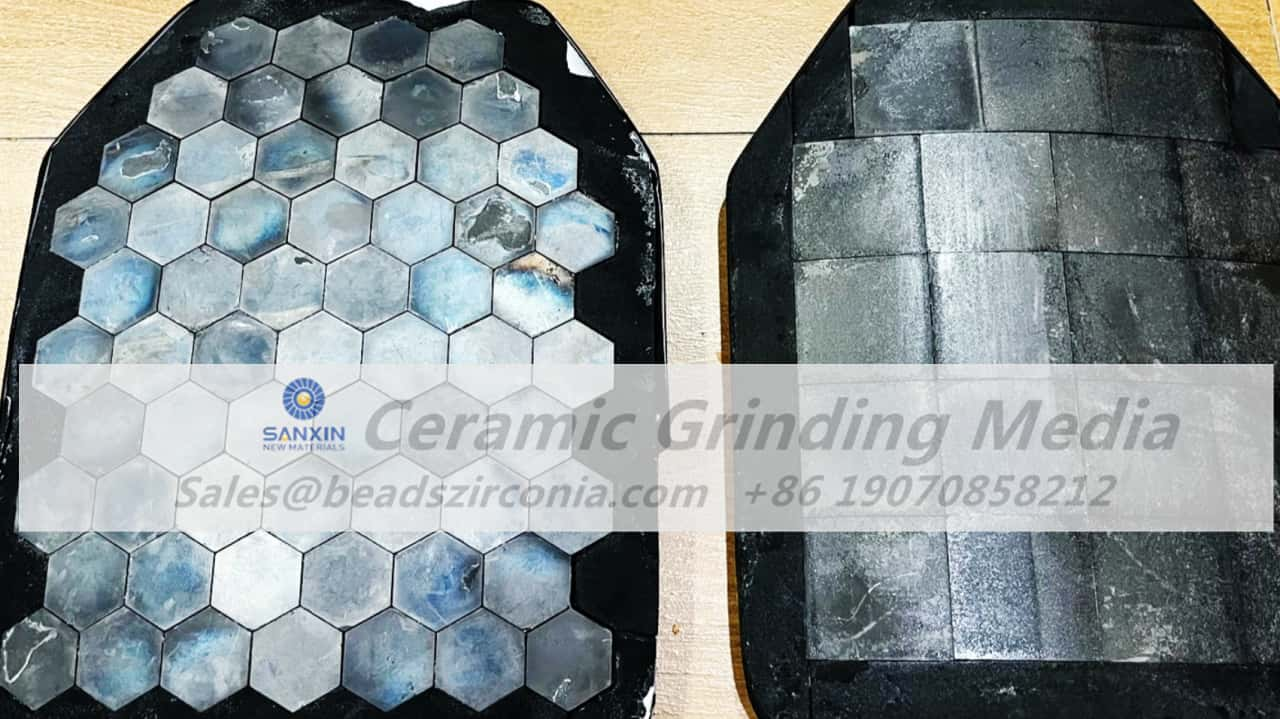
In the complex and ever - evolving domain of ballistic protection, the quest for materials that can provide optimal safeguarding against a variety of projectiles while simultaneously meeting the demands of lightweight design and cost - effectiveness is a continuous and challenging pursuit. The nature of modern threats, whether in military combat scenarios or high - risk civilian security situations, necessitates materials with extraordinary physical and mechanical properties. Boron carbide ceramic (B4C) has emerged as a material that holds the potential to revolutionize the field of ballistic protection. Its remarkable combination of a high melting point, exceptional hardness, and low density sets it apart from traditional ballistic materials, making it an extremely attractive option for a diverse range of applications.
Key engineering equipment deployed in military operations often operates in high - risk and inhospitable environments. Such equipment, which may include specialized construction machinery used for building fortifications or clearing obstacles in war zones, is vulnerable to attacks from small - arms fire, shrapnel, and even improvised explosive devices (IEDs). Boron carbide, with its outstanding ability to resist projectile penetration, offers a reliable solution for protecting this equipment. The high melting point of boron carbide ensures that it can withstand the intense heat generated during an impact, preventing the material from deforming or melting under extreme conditions. This property is crucial as it allows the armor to maintain its structural integrity and continue to provide protection.
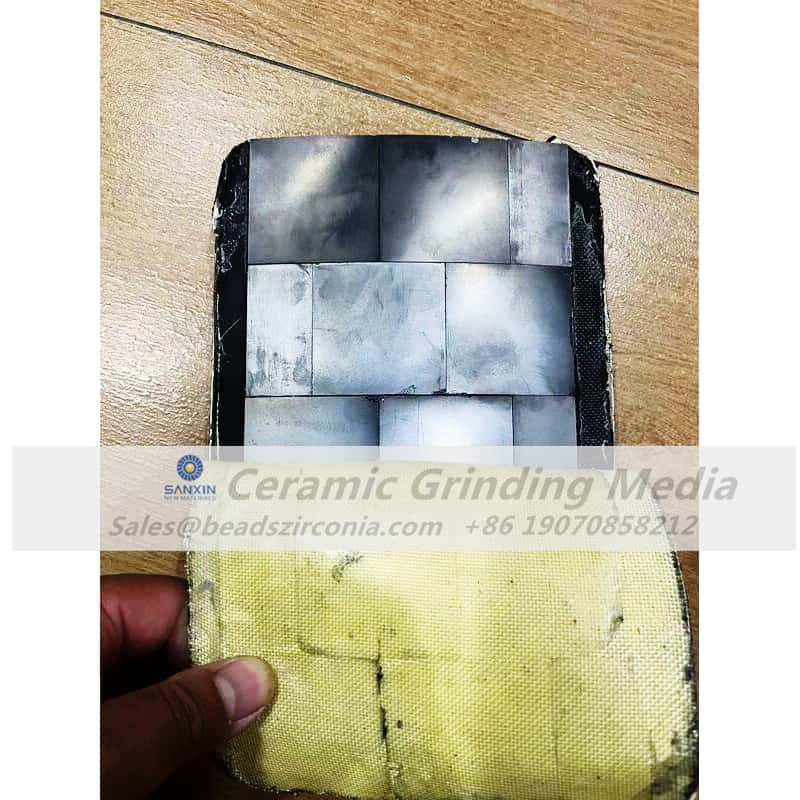
Next - generation main battle tanks are expected to be more than just mobile fortresses; they need to be highly maneuverable, with enhanced protection capabilities. Boron carbide's low density is a significant advantage in this regard. When incorporated into the add - on vehicle roofs of these tanks, it provides protection against aerial - launched projectiles, such as mortar shells or anti - tank guided missiles (ATGMs) with top - attack capabilities. The high hardness of boron carbide enables it to break up and disperse the energy of incoming projectiles, reducing the likelihood of penetration.
Hatch covers, which are frequently used for crew access and egress, must be both durable and lightweight. Boron carbide meets these requirements, offering reliable protection without adding excessive weight that could impede the hatch's operation. Exhaust panels, exposed to the external environment and potential enemy fire, benefit from the corrosion - resistant and ballistic - resistant properties of boron carbide. Turret rings, which are responsible for the smooth rotation of the tank's turret, require a material that can withstand repeated impacts without sacrificing mobility. Boron carbide's combination of hardness and low density makes it an ideal choice for protecting these critical components.
Ballistic glass, which is essential for providing visibility to the crew while maintaining protection, can be significantly enhanced with the inclusion of boron carbide. By integrating boron carbide into the glass matrix, the glass becomes more resistant to bullets and other projectiles, ensuring the safety of the crew inside the tank. Pivot mounts, which support the movement of various parts of the vehicle, are also at risk of being damaged during combat. Boron carbide can be used to protect these mounts, safeguarding the functionality of the vehicle's moving components.
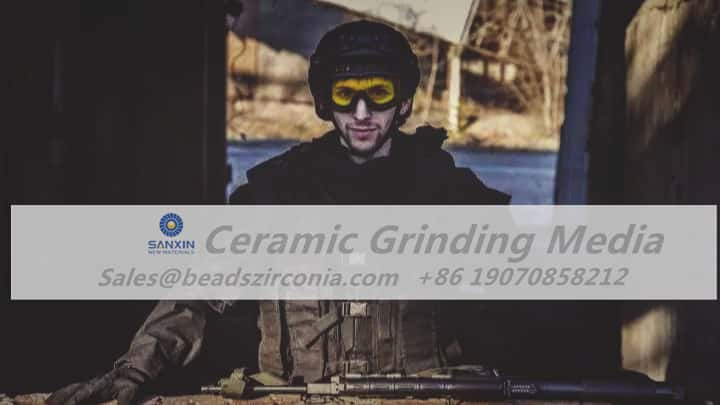
Infantry fighting vehicles are designed to transport infantry troops to the battlefield and provide them with fire support. They are often in the thick of combat and are prime targets for enemy fire. The vulnerable sides of these vehicles are particularly at risk of being penetrated by small - arms fire, machine - gun bullets, and rocket - propelled grenades (RPGs). Boron carbide, when used as side armor, can effectively resist these threats. Its high hardness and ability to absorb and dissipate the energy of incoming projectiles make it an excellent choice for protecting the troops inside.
The design of infantry fighting vehicles requires a balance between protection and mobility. Boron carbide's low density allows for the addition of armor without significantly increasing the vehicle's weight, ensuring that it can maintain its agility and speed on the battlefield. This is crucial as it enables the vehicle to quickly respond to changing combat situations and transport troops to where they are needed most.
Airdrop transport vehicles play a vital role in military operations, as they are used to rapidly deploy troops and supplies behind enemy lines. These vehicles need to be lightweight for efficient airdropping, yet well - protected during their mission. Boron carbide offers the perfect solution. Its low density helps in keeping the vehicle's weight within the acceptable limits for airdropping, while its high - performance ballistic properties ensure the safety of the transported cargo and personnel.
During an airdrop, the vehicle is exposed to potential attacks from the ground. Boron carbide armor can withstand small - arms fire and shrapnel, protecting the vehicle and its contents. In addition, the material's resistance to impact and abrasion ensures that the vehicle remains intact during the rough landing associated with airdrops. This allows for a more reliable and safe delivery of troops and supplies to the intended location.
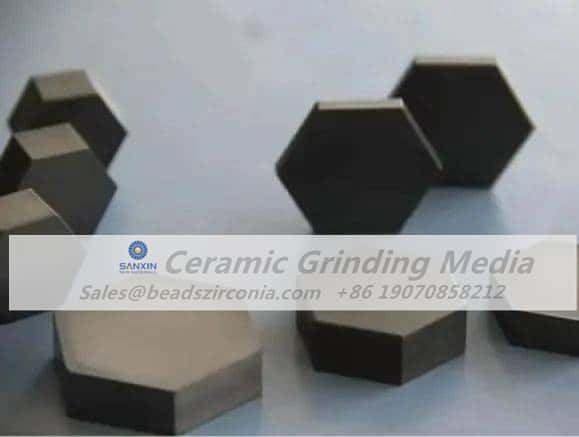
The underbellies of attack helicopters are particularly vulnerable to ground - based fire, especially from small - arms and shoulder - launched surface - to - air missiles (SAMs). Boron carbide, when used in the armor of the underbellies, provides a high level of protection for the helicopter's crew and vital components. In the U.S. Black Hawk helicopters, the use of boron carbide and Kevlar composite armor in the passenger seats is a prime example of how this material can enhance safety.
Kevlar, known for its high strength and cut - resistance, serves as the first line of defense, catching and slowing down the projectile. The boron carbide component then takes over, using its high hardness and energy - dissipating properties to stop the bullet. This combination of materials provides a more comprehensive and effective protection system. Since the 1960s, boron carbide ceramics have been integrated into various parts of armed helicopters. The cockpit floors, which are exposed to potential attacks from below, are protected by boron carbide. This helps to safeguard the pilot's feet and the critical components located beneath the floor, such as the helicopter's avionics systems.
Side ballistic panels protect the pilot and crew from side - on attacks. Boron carbide's ability to resist penetration and absorb impact energy makes these panels highly effective in protecting against bullets and shrapnel. Pilot seats, which need to be both comfortable and protective, are also equipped with boron carbide - based armor. This ensures that the pilot is protected during combat, allowing for better concentration and mission execution.
Naval vessels operate in a complex and dangerous environment, constantly at risk of being attacked by various types of projectiles, including missiles, torpedoes, and gunfire. The superstructure of a naval vessel houses many important systems, such as communication equipment, radar systems, and the ship's bridge. Protecting these systems is crucial for the vessel's operational effectiveness. Boron carbide, with its high - strength and corrosion - resistant properties, is an ideal material for protecting the superstructure.
The material's ability to withstand the impact of high - velocity projectiles, such as anti - ship missiles, is essential. Boron carbide can break up the projectile upon impact, dissipating its energy and preventing it from penetrating the vessel's hull. In addition, the ceramic's resistance to saltwater corrosion ensures that it can maintain its protective properties over long periods of time, even in the harsh marine environment. This is important as it reduces the need for frequent maintenance and replacement of the armor, saving both time and resources.
Hard ballistic vests are a critical part of personal protective equipment, designed to protect the wearer from a variety of ballistic threats. These vests are typically constructed using a combination of metal, ceramic, and composite materials. Among the commonly used ballistic ceramics, boron carbide stands out for several reasons. When compared to other materials, boron carbide has the lowest density. This is a significant advantage as it allows for the production of lighter - weight vests. A lighter vest is more comfortable to wear for extended periods, reduces fatigue, and does not restrict the wearer's movement as much as a heavier vest.
In addition to its low density, boron carbide has a high elastic modulus. This property is crucial in ballistic protection as it enables the material to efficiently absorb and dissipate the energy of incoming projectiles. When a bullet strikes a boron carbide - based ballistic plate, the high elastic modulus causes the plate to deform in a controlled manner. The deformation spreads the impact energy over a larger area, reducing the force exerted on the body of the wearer. This significantly minimizes the risk of injury, such as blunt - force trauma or penetration.
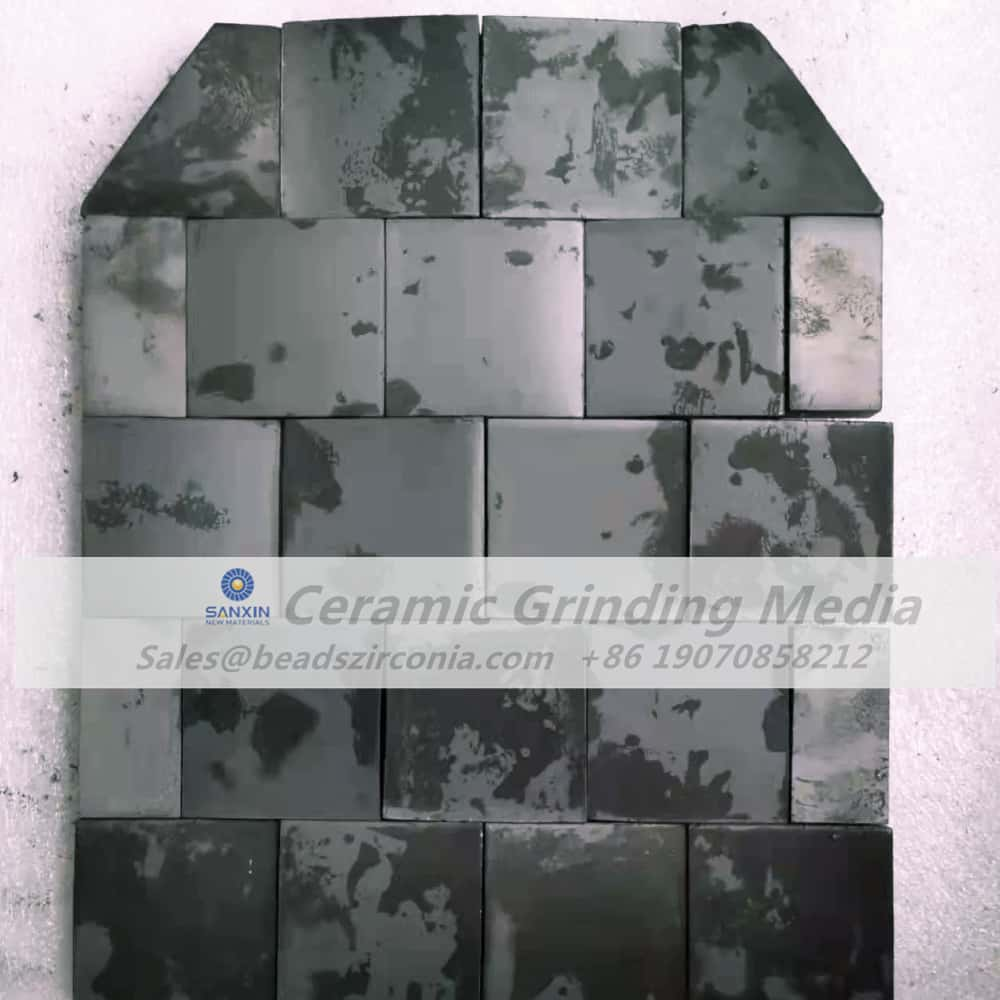
The energy absorption mechanism of boron carbide in ballistic plates is complex and involves several processes. When a projectile strikes the boron carbide plate, the high hardness of the material causes the projectile to start deforming. The ceramic's crystal structure then begins to fracture, absorbing a significant amount of the projectile's kinetic energy. As the projectile continues to penetrate, the fractured ceramic particles interact with each other and with the projectile, further dissipating the energy.
The unique atomic structure of boron carbide, with its strong covalent bonds, plays a crucial role in this energy - absorption process. The bonds are able to withstand high levels of stress during the impact, preventing the material from breaking down too quickly. This allows the boron carbide plate to effectively resist the projectile and protect the wearer.
The "Interceptor" vest, developed in the early 1990s by the U.S. Army Natick Soldier Research, Development, and Engineering Center in collaboration with Specialty Defense Systems in Pennsylvania, was a significant milestone in personal ballistic protection. It was officially introduced to U.S. military forces in January 2001. The vest consists of several key components. The tactical vest provides the overall structure and support, allowing for easy donning and doffing. The soft ballistic inner layer, made of KM - 2 Kevlar fabric, serves as the first line of defense.
Kevlar is a synthetic fiber known for its high strength - to - weight ratio and excellent cut - resistance. When a projectile strikes the vest, the Kevlar fabric catches and slows down the projectile, reducing its velocity. The two front and back boron carbide ceramic plates are the main components responsible for stopping the bullet. These plates are carefully designed to withstand the impact of high - velocity projectiles, protecting the wearer's vital organs, such as the heart, lungs, and liver.
Weighing approximately 7.5 kg, the "Interceptor" vest offers comprehensive protection. It covers over 90% of the critical areas of the body, including the neck, chest, back, abdomen, and groin. The neck area is often vulnerable to attacks, and the vest's design ensures that it provides sufficient protection without restricting the wearer's movement or vision. The chest and back are the most common areas targeted by projectiles, and the boron carbide plates in these areas are designed to withstand multiple impacts.
The abdomen and groin are also important areas to protect, as injuries in these regions can be life - threatening. The vest's design takes into account the need for flexibility in these areas, allowing the wearer to move freely while still providing adequate protection. The relatively lightweight design of the "Interceptor" vest, despite its comprehensive protection coverage, is a result of the use of boron carbide. The low - density nature of boron carbide allows for the creation of effective ballistic plates without adding excessive weight, making it suitable for military personnel who need to be mobile during combat.
Advanced molding technologies are crucial for the production of boron carbide components with precise shapes and high quality. Traditional molding methods for ceramics often have limitations in terms of the complexity of the shapes that can be produced and the dimensional accuracy that can be achieved. However, recent advancements in molding technologies, such as 3D printing and injection molding, offer new possibilities for the production of boron carbide components.
3D printing, also known as additive manufacturing, allows for the creation of complex - shaped boron carbide components layer by layer. This technology enables the production of components with internal structures that are difficult or impossible to achieve using traditional molding methods. For example, components with intricate cooling channels or lightweight lattice structures can be fabricated using 3D printing. In the context of ballistic protection, 3D - printed boron carbide components can be customized to fit specific body contours in bulletproof vests or to match the unique shapes required for armored vehicle components.
Injection molding is another advanced technique that can be used for producing boron carbide components. This method involves injecting a mixture of boron carbide powder and a binder into a mold cavity under high pressure. The binder helps to hold the powder together during the molding process, and after the component is formed, the binder is removed, and the component is sintered. Injection molding allows for the mass production of boron carbide components with high dimensional accuracy and repeatability. This is important for industrial applications, where large quantities of components with consistent quality are required.
Sintering is a key process in the production of boron carbide ceramics, as it is responsible for compacting and forming a solid mass of material by heat and pressure without melting it to the point of liquefaction. Advanced sintering technologies are being developed to improve the mechanical properties of boron carbide. Spark plasma sintering (SPS) is one such technology that has shown great promise.
SPS involves applying a pulsed electric current to the boron carbide powder during sintering. The electric current generates heat, which helps to rapidly sinter the powder. This method allows for the production of boron carbide ceramics with a more uniform and dense structure compared to traditional sintering methods. The high density and uniform structure result in improved hardness, strength, and ballistic - resistant capabilities.
Another advanced sintering technique is hot isostatic pressing (HIP). In HIP, the boron carbide powder is placed in a sealed container and subjected to high temperature and isostatic pressure. The uniform pressure from all directions ensures that the powder is compacted evenly, resulting in a more homogeneous and dense ceramic. HIP - sintered boron carbide has been shown to have enhanced mechanical properties, making it more suitable for high - performance ballistic protection applications.
Reducing the production costs of boron carbide ballistic ceramics is a significant area of research. Currently, the high cost of boron carbide production limits its widespread use. One of the main factors contributing to the high cost is the cost of raw materials. Boron carbide is typically produced from boron - rich compounds, such as boron oxide, and carbon - containing materials, such as graphite. The extraction and purification of these raw materials can be expensive.
Researchers are exploring alternative raw materials that can be used to produce boron carbide without sacrificing its performance. For example, some studies have investigated the use of waste materials, such as boron - containing industrial by - products or recycled carbon materials, as potential sources for producing boron carbide. By using these alternative raw materials, the cost of production can be reduced, and at the same time, it can also contribute to environmental sustainability by recycling waste materials.
In addition to raw material considerations, optimizing the production processes is crucial for cost reduction. The production of boron carbide involves several steps, including powder synthesis, molding, and sintering, all of which are energy - intensive. By optimizing these processes, energy consumption can be reduced, leading to cost savings.
For example, in the powder synthesis step, new methods are being developed to produce boron carbide powder more efficiently. Some researchers are exploring the use of chemical vapor deposition (CVD) techniques to synthesize boron carbide powder. CVD allows for the production of high - purity powder with a controlled particle size and morphology. This can improve the quality of the final product and reduce the need for post - processing steps, which can be costly.
In the molding and sintering steps, advanced technologies, such as the ones mentioned above, can also contribute to cost reduction. For instance, 3D printing can reduce material waste compared to traditional molding methods, and advanced sintering techniques can reduce the sintering time and energy consumption. By implementing these process optimizations, the overall production cost of boron carbide ballistic ceramics can be significantly reduced, making them more accessible for a wider range of applications.
In conclusion, boron carbide ceramic has firmly established itself as an ideal material for ballistic protection. Its unique combination of high melting point, exceptional hardness, and low density gives it a clear edge over traditional ballistic materials. With ongoing research and development efforts focused on advanced manufacturing technologies and cost - reduction, boron carbide is poised to play an even more significant role in the future of ballistic protection. Whether it is in safeguarding military personnel on the battlefield, protecting critical infrastructure, or enhancing civilian security, boron carbide has the potential to redefine the standards of protection, ensuring the safety and well - being of individuals and assets in a variety of high - risk situations.

Submit your demand,
we will contact you ASAP.

Sanxin New Materials Co., Ltd. focus on producing and selling ceramic beads and parts such as grinding media, blasting beads, bearing ball, structure part, ceramic wear-resistant liners, Nanoparticles Nano Powder

